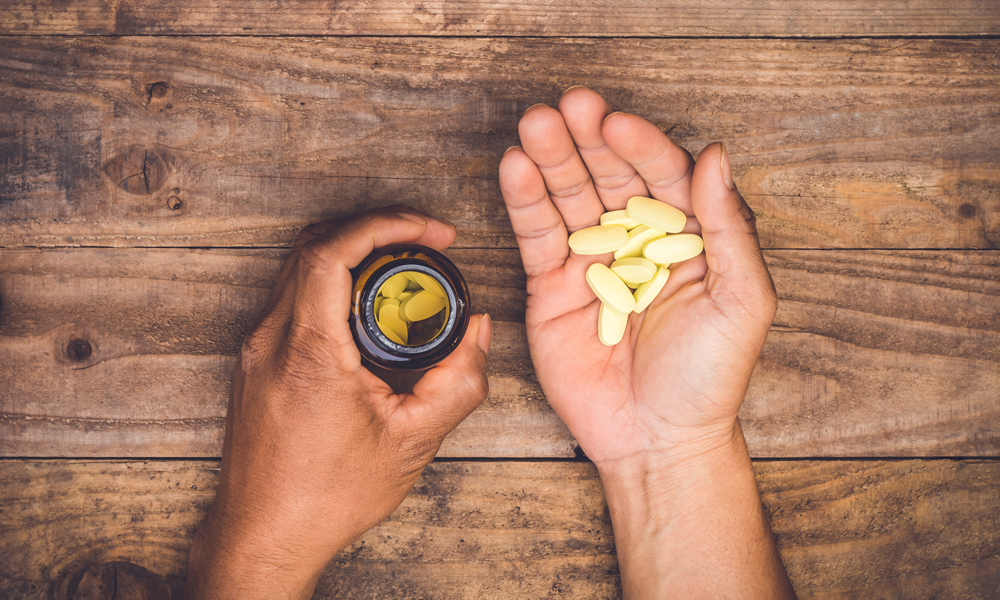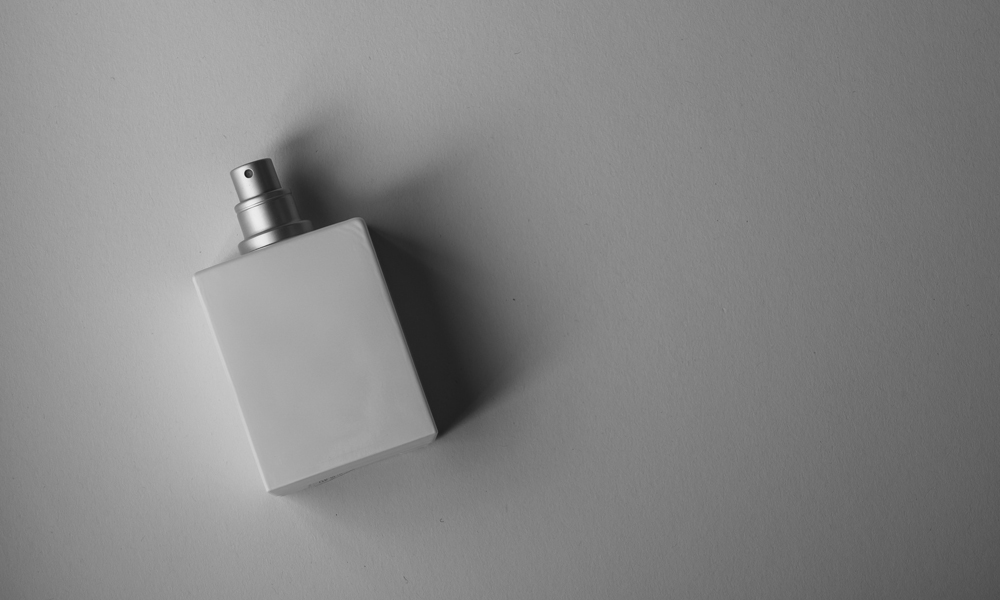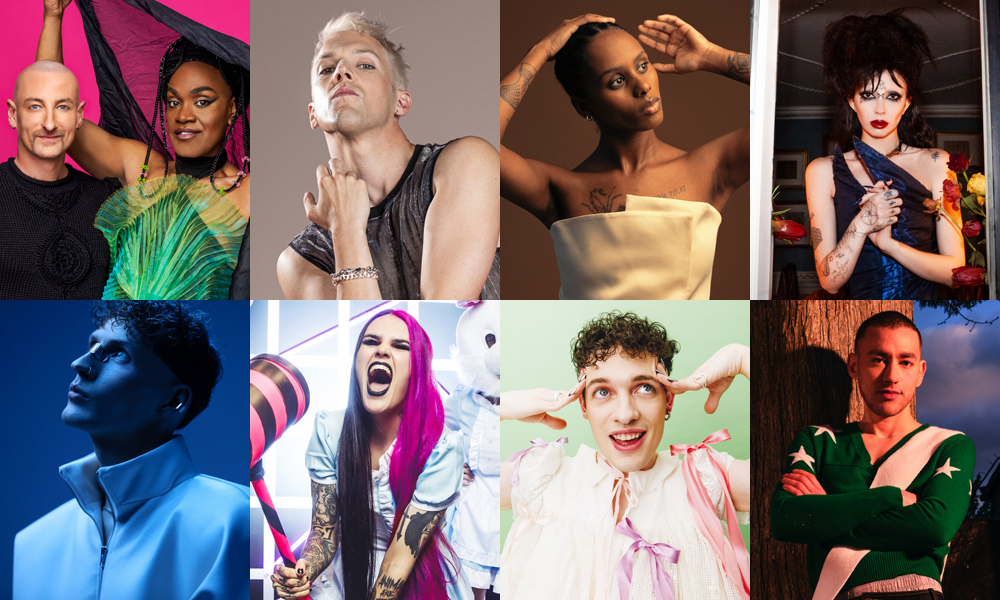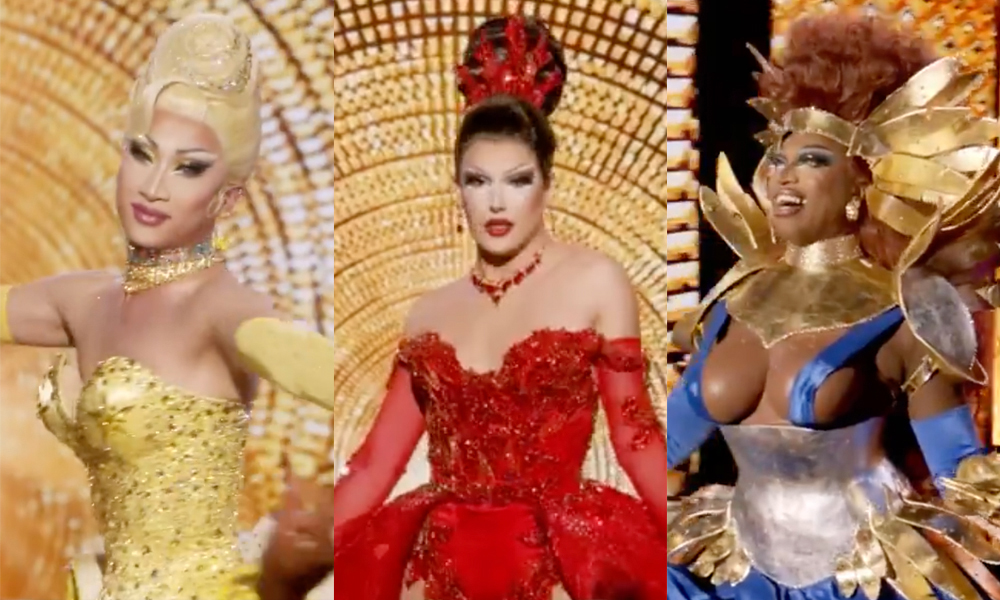Can beauty and wellness pills, powders and patches truly feed your face with collagen, fuel your hair with protein and protect your skin with antioxidants—all from the inside out?…
By Adriana Ermter
Used to be, an apple a day was all we needed – at least according to a Pembrokeshire proverb from the 1860s that is rumoured to have been the original adage, “Eat an apple on going to bed and you’ll keep the doctor from earning his bread.” The phrase stuck, evolving in the 19th and early 20th centuries to “An apple a day, no doctor to pay,” and then eventually to its most commonly expressed, “An apple a day keeps the doctor away.”
Lately, however, we’ve been walking past the grocery store’s produce section without a second glance at the bins overflowing with the vitamin C- and fibre-loaded fruit. Instead, we’re perusing the store’s pharmaceutical aisles in our quest to find the latest youth-enhancing, skin-glowing, hair and nail-growing, health-improving nutricosmetic we can drink, wear or pop into our mouths so we can call it a day.
“People are busy with their careers, families and activities,” explains Dr. Lisa Kellett, a dermatologist and the founder of DLK on Avenue in Toronto. “Taking a pill that claims it can make your skin glow or look younger is their quick fix.”
Not to be confused with multivitamins…
These are not your run-of-the-mill vitamins or multivitamins, says Ash DePass, co-founder and co-CEO of Stunn Collective in Vancouver. She describes ingestible beauty and wellness supplements (otherwise known as nutricosmetics and cosmeceuticals) as nutritional products developed with specific active ingredients.Each one provides benefits such as skin hydration, glow and radiance; an even skin tone and texture; cellular damage repair from inflammation, pollution and free radicals; and collagen and elastin production.
“Most beauty supplements, like Stunn AM and Stunn PM capsules, combine clinically researched ingredients in dosages that are designed to be effective for their intended beauty effects,” adds DePass. “Additionally, the individual ingredients often have synergistic benefits that are only found when they are taken together in the correct doses, which serve to compound the beauty-enhancing effects. When you take a beauty supplement, you are trusting that they are professionally formulated to excel in their beauty-enhancing properties.”
While these supplements may be new in the aesthetic sphere, it was back in the 1920s that scientists declared the need for a balanced diet based on the vitamins found in foods and their correlation with disease prevention. Courtesy of World War I economics, not all foods were consistently and readily accessible, so supplements in the form of essential vitamins and minerals emerged. Over the next several decades, moms across North America diligently doled out everything from castor oil and Flintstones multivitamins to vitamins A, B, C, D and E to their families – all to prevent cancer, heart disease, colds and the flu, and to promote healthy skin and bones. So it’s only natural that beauty and wellness items are now a part of this mix.
You can thank millennials
Currently, ingestible supplements have ballooned into a multi-billion dollar industry that, according to a Net-A-Porter report, claimed more of shoppers’ money than skin care in 2018. As a result, both mega brands and mom-and-pop brands – including GoopGlow Morning Skin Superpowder; Burt’s Bees Protein + Healthy Radiance Protein Shake; Hair, Skin & Nails with Collagen Gummies; Akalo’s Vitamin D3 Patch; and Stunn Collectives’ Capsules – are all getting into the game.
“The wellness trend has exposed people to the value of good nutrition and how good nutrition impacts the entire body, inside and out,” says DePass. “It is only natural that this mindset be extended to using nutrition through ingestible beauty supplements to aid in improving things like skin, hair and nails.”
Increased popularity for this whole-beauty approach can, in many ways, be attributed to millennials’ belief in self-care—a core value said to have developed as a response to the uncertain political climate that began in 2016 and continues to grow, especially on smartphones, where the proof is in the posting. A quick look on Instagram, the millennial’s preferred social home base, shows more than 25 million #selfcare posts along with too many handles to count. These include the editors at @purewow, who encourage their one million followers to gain additional #selfcare insight on their sister ’gram and the 27-year-old health guide @owinpierson, who advocates good mental health to his 137K LGBTQ following, and Dr. Shanté Cofield a.k.a. @themovementmaestro, who promotes a healthy body and mind to 55K men and women alike. With all of the feels and none of the judgment, beauty and wellness ingestibles fall straight into this millennial-influenced mindset with their products’ feel-good, do-good promises, purpose-driven marketing, environmentally friendly packaging and, often, all-natural ingredients.
Check the ingredient list twice
Vitamins A, C and E are some of the most popular ingredients listed on said packaging, as they benefit both skin and hair health. Others to note are zinc, silicon, folic acid, leucine and iron for hair, and flaxseed and sunflower oils with lycopene for skin. Grass-fed collagen peptides can be found on both hair-care and skincare ingredient lists.
The problem? “There’s no evidence-based medical reporting that they actually work,” says Dr. Kellett. “Vitamins, iron, antioxidants, etc., are best absorbed through bright-coloured fruits and green leafy vegetables. Even then, they go through your gut, are dissipated and excreted” before making their way to your face.
The research and development teams at ingestible brand manufacturers are willingly jumping through arduous national food, drug and health-bureau hoops to prove the efficacy of their plant-based molecular formulas. Other elements – such as amino acids like collagen, and proteins like peptides – are harder to verify. With limited clinical evidence, says Dr. Kellett, more research is needed to definitively prove their ingestible value.
“Collagen is just one part in the bigger picture towards creating healthy-looking and feeling skin,” says Dr. Kellett. Multiple contributors like the sun’s UVA (aging) and UVB (burning) rays, pollution, free radicals, hormones and more contribute to damaged, dehydrated, aging and wrinkled skin. “Topical care through daily use of sunscreen, as well as skincare products and dermatological treatments, are the best defence,” she says.
Still, one well-known area of research is with antioxidants, like vitamin C, which can help protect skin from UV rays and support hydration, while playing a key role in collagen and keratin production. Other compounds, such as carotenoids, polyphenols and flavonoids, support elasticity, hydration and tensile strength, and repair skin damage. “Certain vitamins, minerals and herbs can have a direct impact on your skin health and have lots of clinical research supporting these claims,” says DePass. Through their stimulation of natural collagen production, these ingredients are believed to rejuvenate skin over time and aid in hydration and glow. Daily use of beauty and wellness powders, patches and pills are typically recommended, while results are most frequently seen after the initial two- to three-week period. Consistency and commitment to long-term usage is key, as the cumulative process is necessary in achieving the best results.
“It’s important to remember that our bodies are made of many interconnected systems,” says DePass. “Aside from providing direct skin benefits, most beauty and wellness supplements support you internally and externally, which in turn leads to healthy aging and better skin.”
—
ADRIANA ERMTER is a Toronto-based, lifestyle-magazine pro who has travelled the globe writing about must-spritz fragrances, child poverty, beauty and grooming.






POST A COMMENT